#stellantis electric car
Text
In 2023 Fiat 500e: Leading The Electric City Car
The success of FIAT’s electric jewel is confirmed by brilliant sales results: since its launch in 2020 the 500e has been the most sold electric city car in Europe and the best-selling EV of Stellantis Group.
Olivier Francois, FIAT CEO and CMO Global of Stellantis, stated: “The Fiat 500e has once again confirmed its success, leading the electric city car segment in Europe for the second year in a…

View On WordPress
0 notes
Text

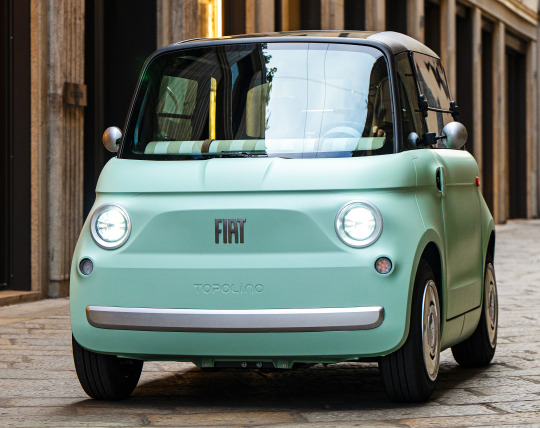

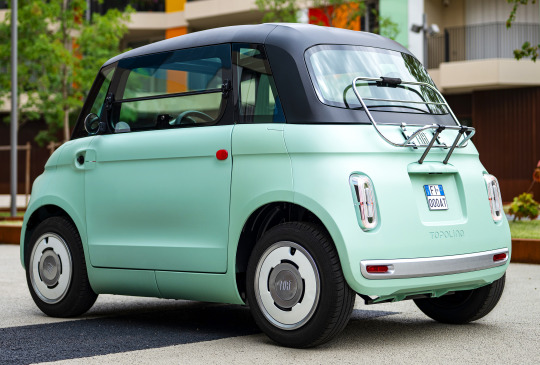
Fiat Topolino, 2023. More details have been revealed for Fiat's electric quadricycle microcar that shares components with Citroën's Ami. It has a 5.4 kWh battery that provides 75 km (47 miles) of range and a top speed limited to 45 kmh (28mph). It is only available in one colour and doors are optional. With a total length of 2.53 meters (8 ft) the Topolino is classified as a quadricycle and does not require a driver's licence in many markets and can be driven by drivers as young as 14 years old.
#Fiat#Fiat Topolino#EV#electric vehicle#microcar#quadricycle#electric microcar#new cars#Topolino#2023#stellantis
550 notes
·
View notes
Text



#Peugeot#Peugeot 408#suv#cross over#cars#new cars#frensh#stellantis#new#hot#car#ev#bev#electric#hybrid#new car#fastback#crossover#cross over coupe#suv coupe#suv fastback#cross over fastback
14 notes
·
View notes
Text
youtube
Opel Astra-e Tourer range test
#Norway#ev range test#electric vehicles#electric car#winter#Youtube#Opel Astra-e Tourer#Opel#Stellantis
3 notes
·
View notes
Text
#kirill klip#lithium#copper#gold#silver#royalties#tnr gold#gem royalty#tesla#electric cars#rio tinto#stellantis#los azules copper#McEwen mining#argentina#renewables
0 notes
Photo

A million electric vehicles sold in one year is no longer just a dream. People are starting to believe in a future where the roads are filled with silent, efficient vehicles, and the air is no longer filled with smog. A future of environmental responsibility, and a sustainable way of life. The cities of tomorrow prepare to welcome this new reality, and it is only a matter of time before EV sales hit the milestone of 1 million vehicles sold in a single year.
#ev#electric car use by country#joe biden#experian#sueddeutsche zeitung#electric vehicle#tesla inc#stellantis#hyundai ioniq 5#doo gyum kim#general motors#united auto workers strike#ford workers reject#hyundai#hyundai motor company#ford#united auto workers#fault#Electric vehicles#sustainable#silent#efficient#smog#cities
0 notes
Text
Weekly output: FuboTV rate hike, Varjo, NextGen TV, Washington Apple Pi, sustainability at CES, Twitter apps, Mark Vena podcast
Weekly output: FuboTV rate hike, Varjo, NextGen TV, Washington Apple Pi, sustainability at CES, Twitter apps, Mark Vena podcast
You can imagine how much I appreciate having this holiday weekend follow CES. I came home last Sunday morning exhausted and with a cold–but fortunately not Covid, as verified by three negative tests since then.
(Speaking of CES, Patreon readers got a post sharing more of my notes from the show.)
1/9/2023: FuboTV Increases Rates by $5 a Month, Tacks on ‘RSN’ Fee, PCMag
I have to wonder if Fubo…

View On WordPress
#AR#ATSC 3.0#ces#CES 2023#electric cars#electrification#FuboTV#John Deere#Las Vegas#Mark Vena#mixed reality#NextGen TV#rate hike#regional sports networks#Stellantis#streaming TV rate hikes#sustainability#third-party Twitter apps#Tweetbot#Twitter API#Twitterrific#user group#Varjo#Vegas#VR#Washington Apple Pi
0 notes
Text
Fiat Testing Roads That Wirelessly Charge EVs While You Drive – Review Geek
Fiat Testing Roads That Wirelessly Charge EVs While You Drive – Review Geek
A common concern when it comes to electric vehicles is charging. That includes the electric grid handling the growing demand or having enough charging stations where we drive. Thankfully, in the future, we could have roads with wireless charging built-in, and our cars can charge as we drive.
Stellantis, the company behind popular brands including Alfa Romeo, Chrysler, Citroën, Dodge, Fiat, Jeep,…
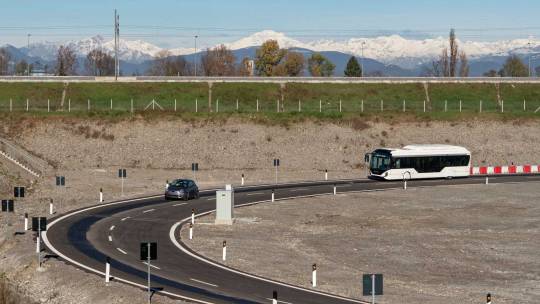
View On WordPress
0 notes
Text
More Misadventures in Green Transportation

More Misadventures in Green Transportation
The electric vehicles that leftists subsidize to the hilt with our money and that they intend to force us to drive continue to make no sense.
Exhibit A:
Automaker Stellantis on Wednesday announced a recall of more than 32,000 of its hybrid Jeep Wrangler SUVs because they pose a potential fire risk.
As part of what the company described as a routine review of customer information, Stellantis determined that eight of the hybrid Wranglers had caught fire while they were turned off and parked.
Those foolish enough to have purchased these vehicles rather than real cars are advised by Stellantis not to park them near buildings, because they might burst into flames at any time.
For Exhibit B, David Blackmon guffaws over an Edmonton Journal article entitled, “More than half of Edmonton’s $60-million electric bus fleet not roadworthy.”
The Canadian city purchased 60 electric buses for $1 million each (double the cost of reliable diesel buses) from the green boondoggle Proterra, which has gone Chapter 11, making it difficult to keep the buses running in Edmonton as in Jackson, Wyoming, where the entire fleet does not work.
From the story:
It takes a diesel-powered on-board heater to keep the body of the bus warm. And despite $200,000 in special blankets to keep all those batteries toasty, the Proterra buses are still feeling that northern Alberta chill in their skimpy range.
That’s $3,333 per bus to keep the batteries warm. But still the buses don’t work.
That’s okay; soon electric moonbatmobiles will be mandatory. They will work because bureaucrats will command that they have to work.

46 notes
·
View notes
Text
The meeting comes as Democratic officials and labor observers brace for a likely strike by UAW, which could have major economic and political ramifications. It also took place in the shadow of the UAW withholding its support from the president’s reelection campaign for the time being due to its concerns over his handling of the electric vehicle transition.
UAW spokesperson Jonah Furman told POLITICO that Fain asked for Biden’s support in contract talks with GM, Ford and Stellantis. Furman said Fain asked Biden to use his “bully pulpit” and pushed him to attach stronger labor provisions to federal grants and loans funded by the Inflation Reduction Act.
UAW’s contract with the car companies ends Sept. 14.
A White House official said that UAW asked to set up a meeting with Biden’s senior staff so that they could present their position on the labor negotiations with the automakers. When Biden heard about the meeting, the official said, he asked if he could speak with Fain privately. The two had a short discussion.
19 Jul 23
53 notes
·
View notes
Text
Folks,
Greetings from the Burgh, where I just wrapped up a three-day documentary film shot and wanted to bring you a quick update on the GM contract, which increasingly looks like it will be voted down.
GM Workers Poised to Vote Down UAW Contract
Last month, UAW President Shawn Fain was rebuked when 5,000 Mack Truck workers voted down a tentative agreement crafted by Fain. Now, it appears increasingly likely that GM workers are poised to vote down a tentative agreement once again.
With 17,000 GM workers out of 46,000 GM workers have voted so far, 51% of all GM production workers nationwide have voted against the deal, according to a tracker run by Automotive News. Increasingly, the “no vote” movement is gaining momentum within the UAW.
Last week, a majority of 4,460 at GM’s Flint plant voted against the contract. Today, it was announced that 62% of the 2,100 workers at GM’s Lansing Delta plant voted no. It was also announced today that 68% of the 3,900 workers at GM’s Spring Hill, Tennessee plant voted no.
While the UAW has publicly touted that their proposed GM contract includes a 25% wage increase, the contract cuts many popular bonuses.
Workers will no longer receive an annual $1,500 performance and quality bonuses. More significantly, when GM workers struck in 2019, they received an $11,000 signing bonus and full-back pay for their time on strike. Now, workers will receive only a $5,000 signing bonus plus back pay when they return to work.
Many UAW members are also upset that GM workers who moved away from Lordstown, Ohio, to take jobs elsewhere will not be guaranteed their jobs if they decide to return to Lordstown. Only GM workers who did not leave Lordstown will be guaranteed the right to return to GM’s electric car battery plant.
Furthermore, UAW President Shawn Fain initially promised they would win the right to work only four days a week for the same pay. However, the proposed contract does not even contain provisions against forced overtime.
Insiders say that UAW President Shawn Fain has mishandled the ratification process by ordering UAW members to return to work before the ratification vote process is finished.
Previously, the UAW allowed members time to study the contract before voting on it and deciding to return to work, creating a situation where members increasingly feel betrayed by their union leadership and are voting no.
“If you overpromise and under deliver, it’s always gonna come back to haunt you,” one senior UAW official told Payday Report. “Where you have social media, you can reach a lot of people in a hurry, and that’s been a huge game changer.”
While it remains unclear whether or not the tentative agreement will pass at GM, 81% of Stellantis members have so far voted for their agreement, and 66% of Ford workers have voted for their agreement.
Payday will have more updates tomorrow.
Donate to help us continue to cover this important story. Please, if you can, sign up as one of our 763 recurring donors today.
See yinz tomorrow.
Melk
33 notes
·
View notes
Text


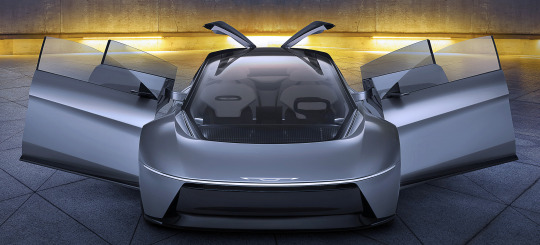
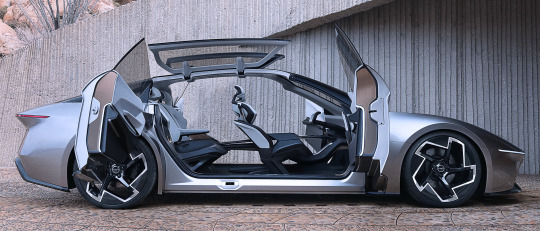

Chrysler Halcyon Concept, 2024. A prototype for Chrysler's new electric saloon that reveals the design language for their future electric range. Their first new electric model, a crossover, is due next year but the saloon is further alway.
#Chrysler#Chrysler Halcyon#Chrysler Halcyon Concept#EV#electric car#concept#prototype#design study#2024#futuristic#suicide doors#Stellantis
117 notes
·
View notes
Text

#cars#car#luxury#luxurycars#mercedes#bmw#kia#hyundai#general motors#honda#stellantis#ev#bev#electric#electric car
4 notes
·
View notes
Text
youtube
WTF? Citroen’s New Electric Car Is Insanely Cheap!
Jack is in Paris to elbow his way through the world's press for a first look at the shockingly affordable Citroen e-C3. Showcasing Citroen's all new design language and boasting a price some £10,000 less than its Stellantis group siblings, has the era of the truly cheap electric car finally arrived?
#France#Citroen e-C3#Paris#french car#russian defeat#fossil fuel phase-out#affordable ev#Stellantis#electric vehicle#electric car#Youtube
2 notes
·
View notes
Text
#kirill klip#lithium#copper#gold#silver#royalties#tnr gold#gem royalty#electric cars#los azules copper#mcewen mining#rio tinto#argentina#stellantis#green energy metals#renewables
0 notes
Text
Elon Musk hasn’t been sighted at the picket lines in Missouri, Ohio, or Michigan, where autoworkers are striking against the Big Three US carmakers. Yet the influence of Musk and his non-unionized company Tesla have been everywhere since the United Auto Workers called the strike last week. In some ways, Tesla—the world’s most valuable automaker by market capitalization—set the whole thing in motion.
Tesla’s pioneering electric vehicles kicked off a new era that has turned the entire auto industry on its head. In a scramble to compete with Tesla and make that transition, the legacy automakers targeted by the current strike, General Motors, Ford, and Stellantis, have each pledged billions in global investment and have begun dramatically restructuring their operations. For workers, the “green jobs” being created can be scarcer and worse paying.
Electric vehicle powertrains have many fewer moving parts than conventional gas-powered ones, and so they require 30 percent fewer vehicle assembly hours, according to one estimate. Plants that make EV batteries are generally outside the core, unionized auto supply chain. The United Auto Workers has seen a dramatic drop in membership due to jobs moving outside the US—it lost 45 percent of its members between 2001 and 2022. A future with more electric vehicles could mean fewer union jobs overall. “This strike is about electrification,” says Mark Barrott, an automotive analyst at the Michigan-based consultancy Plante Moran.
The new assembly plants that the legacy automakers need to pull off the transition have been stood up mostly in US states hostile to union organizing, such as Kentucky, Tennessee, and Alabama. And because many of these plants are joint ventures between automakers and foreign battery companies, they are not subject to previous union contracts.
The UAW did not respond to a request for comment, but UAW president Shawn Fain told CNBC last week that the electric transition can’t leave workers behind. “Workers deserve their share of equity in this economy,” he said.
Tesla’s rise over recent years has also put ever-ratcheting pressure on the legacy automakers to cut costs. Including benefits, Musk’s non-unionized EV company spends $45 per hour on labor, significantly less than the $63 per hour spent in the Big Three, according to industry analysts.
Musk’s willingness to upend auto manufacturing shibboleths has also forced his legacy competitors to seek new efficiencies. Tesla led the way in building large-scale car casts, stamping out very large metal components in one go rather than making a series of small casts that have to be joined together. And it pioneered an automotive chassis building process that can be easily adapted to produce different makes and models.
Tesla’s Silicon Valley roots also helped it become the first automaker to envision the car as a software-first, iPhone-like “platform” that can be modified via over-the-air updates. And the company aims to automate more of its factories, and extract more of the materials it needs to build its batteries itself.
Tesla’s novel production ideas could soon lead the company to put even more pressure on legacy automakers. Musk said earlier this year that Tesla plans to build a new, smaller vehicle that can be made for half the production cost of its most popular (and cheapest) vehicle, the Model 3.
Musk says a lot of things, and many don’t come to pass. (The world is still waiting for the 1 million Tesla robotaxis promised by the end of 2020.) But Tesla has been disruptive enough to leave legacy automakers, including Detroit’s Big Three, “in a quest for capital,” says Marick Masters, who studies labor and workplace issues at Wayne State University's School of Business. Detroit’s automakers have made good money in the past decade—some $250 billion in profits—but also paid a significant chunk of it out in dividends. Pressure from Tesla and the EV transition it catalyzed has left them feeling as if they need every penny they can corral to keep afloat as the industry changes.
“They have little money to concede for union demands,” says Masters. The UAW’s wants include significantly higher wages, especially for workers who have joined the companies since their Great Recession and bankruptcy-era reorganizations, which left some with less pay and reduced pension and health benefits.
So far, the UAW has shown little patience for the idea that the automakers it is pressuring are cash-strapped and under competitive pressure. “Competition is a code word for race to the bottom, and I'm not concerned about Elon Musk building more rocket ships so he can fly into outer space and stuff,” UAW president Fain told CNBC last week when asked about pressure from Tesla. He has argued that production workers should receive the same pay raise received by auto executives over recent years.
When automakers have taken the opposite tack, insisting that they’re well capitalized and making plans to put them ahead of the electric car maker—well, that set up conditions for this strike too. The three American automakers are forecasted to make $32 billion in profits this year, a slight dip from last year’s 10-year high. “The more they toot their own horns about profitability, the more the union looks at them and says, ‘We want our rightful share,’” says Masters.
Tesla did not respond to a request for comment, but Musk has, in typical fashion, chimed in. He posted on X last week to compare working conditions at his companies with the competition, apparently seeking to turn the dispute he helped foment into a recruiting pitch. “Tesla and SpaceX factories have a great vibe. We encourage playing music and having some fun,” he wrote. “We pay more than the UAW btw, but performance expectations are also higher.” A UAW attempt to organize Tesla workers in 2017 and 2018, as the company struggled to produce its Model 3, failed. The National Labor Board ruled that Tesla violated labor laws during the organizing drive; the carmaker has appealed the decision.
5 notes
·
View notes